By Rosario Scafaro –
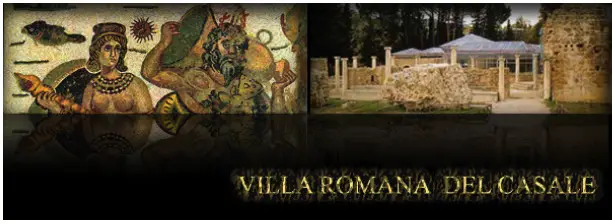
There are places in ther world where the passing time left the traces of our origin’s history, the truth and the enigma of it. In Sicily, in the Mediterranean hearth, precisely three Km ( 1.8 miles ) outside a small town called Piazza Armerina, in a verdant valley of pines, elms, trees, hazels, ispired workers had written by stone, the testament of the whole classical mankind. During the twenties, thirties and forties of last century started the first inspections leading to discover the monumental complex well known as “ Villa Romana del Casale ”, which was completely uncovered with the excavations of fifties.
This is a luxurious habitation, recently recognized by UNESCO as a World Heritage Site.
The villa with its over 3500 sqm ( 4200 sqyd ) of mosaics pavements is a great testimony of Roman Epoch life and offers the most extraordinary and wide known text of mosaic decoration that, for the complexity of its iconographic apparatus, is not comparable to the mosaics of the Roman Tunisian villas. The maestry, which between the III and IV century AD provided to the empire the most flourishing schools of mosaics decoration, was African. The villa was the hunting residence of Maximilian Herculean, opposite number of Diocletian, both sharing the management of the Roman Empire.
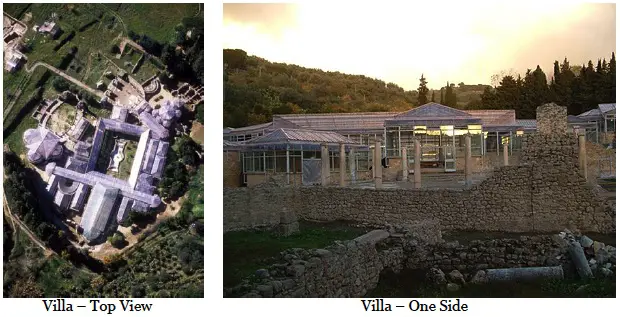
What helped the villa to attain its fame in the world it has been the impeccable ability in having kept in good repair its mosaics, and furthermore to possess the most large and fascinating mosaics which never had been made during the Roman Epoch. Through them we can admire scenes taken from Homero’s works, mythological scenes, as well as images from moments of daily life which, besides, they look like very realistic.


The late-Roman villa, completely uncovered (aside from the pars fructuaria that has been searched in 2004 in the east side of the main entry) has a defined planimetry consisting of four groups of rooms with galleries, peristyles, courts and thermal areas: it’s a big complex of buildings in which we find a pleasant sinuosity, differences in level, exedras, stairs and asymmetries that obeyed above all to a specific function.
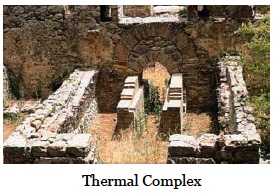 The lower level is made up of a thermal complex and the great exedra latrine; the second level includes the peristyle and the areas of stay; the third one comprises a three apses hall and the opposite xystus; then there is a fourth group of buildings that is made up of private apartments and the basilican room that is opened on a long ambulatory.
The lower level is made up of a thermal complex and the great exedra latrine; the second level includes the peristyle and the areas of stay; the third one comprises a three apses hall and the opposite xystus; then there is a fourth group of buildings that is made up of private apartments and the basilican room that is opened on a long ambulatory.
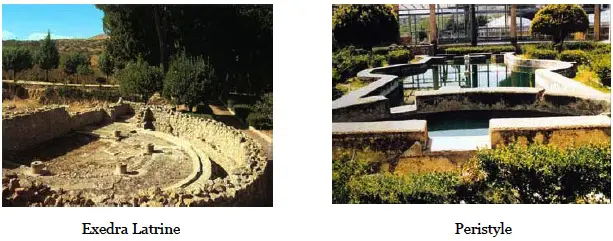
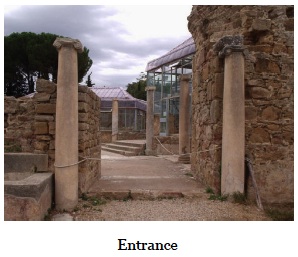 By the monumental entrance (south side), made up of a door with three arches and that had to be sure plastered, frescoed (some rest remains) and adorned with statues, it enters the complex. It accesses a colonnade and a courtyard that leads to the quadrangular portico (north-west side) or to the thermal quarter (west side). From the courtyard it reaches, through two dressing rooms, the gymnasium of which mosaic decoration evokes a race between quadrigae set in the Circus Maximum of Rome. From here it accesses the frigidarium with its octagonal plan with seven exedra niches of which the southern one has three apses and the north one is an psidal swimming pool. The niches decorations represent dressing and ablution scenes, while the frigidarium represent marine scenes, the two bathtubs with walls and pavements covered with marbles. From the frigidarium it enters the tepidarium and therefore the calidarium which manifests the heating system with suspensurae and praefurni.
By the monumental entrance (south side), made up of a door with three arches and that had to be sure plastered, frescoed (some rest remains) and adorned with statues, it enters the complex. It accesses a colonnade and a courtyard that leads to the quadrangular portico (north-west side) or to the thermal quarter (west side). From the courtyard it reaches, through two dressing rooms, the gymnasium of which mosaic decoration evokes a race between quadrigae set in the Circus Maximum of Rome. From here it accesses the frigidarium with its octagonal plan with seven exedra niches of which the southern one has three apses and the north one is an psidal swimming pool. The niches decorations represent dressing and ablution scenes, while the frigidarium represent marine scenes, the two bathtubs with walls and pavements covered with marbles. From the frigidarium it enters the tepidarium and therefore the calidarium which manifests the heating system with suspensurae and praefurni.
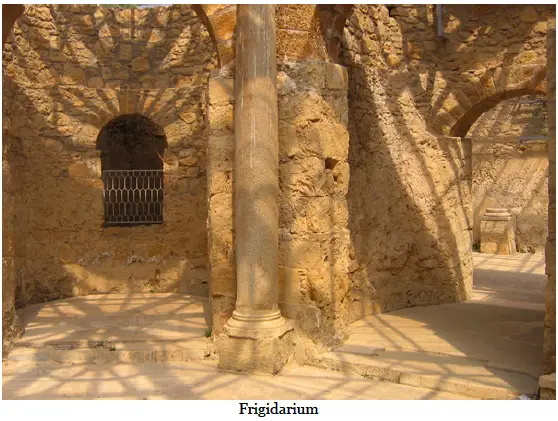
A few mosaic images, walking along corridors, across the rooms :


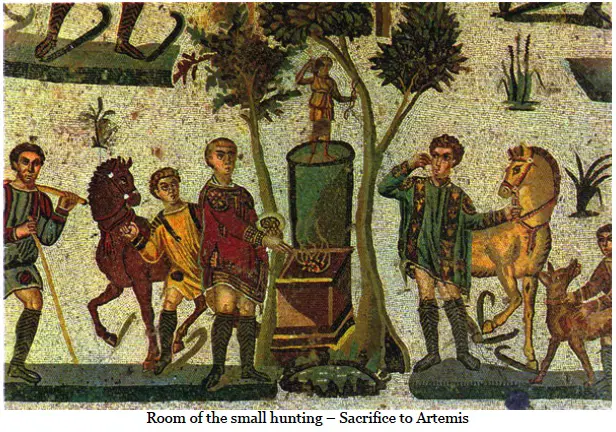

Although, I could not give a faithful description of the wonderful mosaic decoration of this unique and mysterious villa, since I am aware there are no words to describe the same pleasure that only the eyes can enjoy nor feel the enveloping and particular atmosphere of the place, nevertheless I hope I succeeded in getting the curiosity, at least, of all those who do not know this work as yet, and they would be pleased to visit this large carpet of mosaic pavements, which has become a priceless gem in the history of art.
That’s a real boast for my Sicily!
“Rosario by www. EtnaMadre.com”